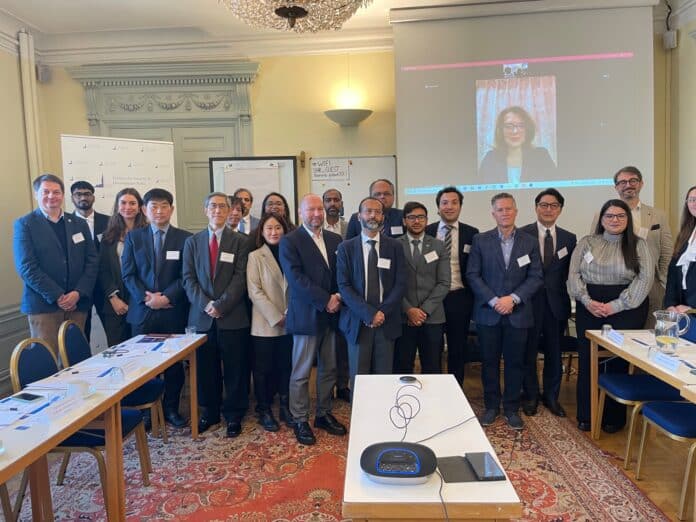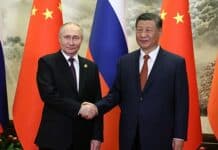- China’s role as a revisionist power in the region needs to be addressed
- Urgency of tackling both environmental and geopolitical issues in the Himalayas
The first-ever Stockholm Forum on Himalaya held on 17 October 2024 called for stronger collaboration between India, the EU, Japan, and Nordic countries, focusing on soft infrastructure, renewable energy, and regional connectivity. Organized by the Stockholm Center for South Asian and Indo-Pacific Affairs (SCSA-IPA) of the Institute for Security and Development Policy (ISDP) in Stockholm, Sweden, the event focused on the implications of China’s expanding influence in the Himalayas.
Titled “Mapping China’s Himalayan Hustle,” the forum probed the intricacies of China’s role as a neo-revisionist power in the region, exploring how its infrastructure development, military strategies, and diplomatic initiatives were reshaping the geopolitical landscape. In the context of growing tensions and strategic competition in Asia, particularly in the Himalayas, the conference aimed to foster dialogue among scholars, and experts from India, Europe, East Asia, and the U.S. on the broader ramifications of China’s ambitions.
The discussion emphasized the importance of regional integration in South Asia, with India playing a pivotal role, especially in addressing climate-related challenges. However, differing views emerged on how to engage with China, with some advocating for accountability and others for cooperation on climate leadership. Additionally, the future of Tibet, particularly in the post-Dalai Lama era, was highlighted as a key issue requiring greater EU-India cooperation and structured dialogue.
Set against the backdrop of Sjöfartshuset, a historic venue on Skeppsbron 10, the conference began with welcome remarks from Dr. Jagannath Panda, Head of the Stockholm Center for South Asian and Indo-Pacific Affairs at ISDP. Dr. Niklas Swanström, the Executive Director of ISDP, delivered introductory remarks, addressing the urgent need for strategic engagement in the face of evolving global dynamics.
The event featured three key sessions, designed to address the multi-faceted nature of China’s regional strategy. The first panel, moderated by Dr. Panda, focused on China’s growing assertiveness and its impact on regional dynamics, particularly in the Indo-Pacific. Panelists emphasized China’s strategic ambitions to outcompete the U.S. and limit India’s influence, with infrastructure development and geopolitical tensions in the Himalayas cited as key areas of concern.
While some argued that China has shifted from a revisionist to a more pragmatic, status quo power due to internal and external pressures, others highlighted China’s continued efforts to reshape global governance and assert dominance as a neo-revisionist power. Cooperation between India, Japan, and other regional actors was seen as essential in countering China’s influence, while the Quad was acknowledged as a crucial platform for security collaboration.
Beijing’s strategic infrastructure development and military presence in the Himalayas was addressed by the second panel, moderated by Mr. Richard Ghiasy, a Senior Fellow at Leiden Asia Center, and emphasized the dual-use nature of China’s projects, which serve both civilian and military purposes. The panel underscored China’s control over critical water resources, such as rivers and dams, as a growing concern for neighboring countries like India and Bangladesh. They also highlighted the region’s geopolitical importance, noting China’s efforts to assert dominance over South Asia through alliances, particularly with Pakistan, and large-scale infrastructure investments that foster economic dependency. The panel called on Western powers to offer viable alternatives to China’s development model to reduce its regional influence.
The final panel discussion, moderated by Ms. Eerishika Pankaj, Director, Organisation for Research on China and Asia (India), highlighted a shared concern about China’s growing influence in the Himalayas through infrastructure projects and control of water resources, with particular emphasis on its strategic hydropower developments.
There was broad agreement on the need for greater collaboration between India and the EU to counter China’s dominance, particularly through initiatives like the Global Gateway and satellite cooperation. Many felt it was important that India and the West (both the US and EU) strengthen diplomatic alliances and alignments with Nepal, Bhutan, and Myanmar. However, speakers noted challenges, including India’s inconsistent approach to regional alliances like the Quad, and differing views on whether NATO or the US could play a significant role in the region. Despite these challenges, there was a consensus on the urgency of addressing both environmental and geopolitical issues in the Himalayas.
Clearly, more efforts are necessary to discuss and analyze deeply the Chinese strategy for the Himalayan region since it is complex and involves different sectors, interests, and activities. The gathering provided a platform for discussing the interconnections between climate change, infrastructure development, and regional connectivity, emphasizing the importance of collaboration in addressing shared challenges in the Himalayan region.
Participants felt that when talking about preserving the rules-based order, it cannot only be Indian Ocean or Indo-Pacific specific or maritime related; it has to also take into consideration communities and issues from other regions or from other land geographies. Issues have been discussed in the European Parliament quite often but more from the human rights point of view. The time has come to raise awareness in the European Union domain to talk about water issues, about ecological and environmental preservation in the Himalayan regions as well as how to preserve and respect the different ethnic communities living in the Himalayas.
The first Stockholm Forum on Himalaya organized by the Institute for Security and Development Policy (ISDP) was preceded by a series of webinars, dealing with China’s infrastructural planning in the Himalayan region, China’s economic dominance in the region, and how the Chinese are trying to change the status quo in the Himalayan region. The final webinar sought to visualize the possibilities and potential for the EU, India, and the US to work together in order to highlight China’s revisionist actions in the Himalayan region.
The webinars brought together some of the finest experts on the subject and aimed to put a spotlight on China’s manipulative efforts to gain greater influence in the Himalayan region via its “charm offensive,” but ultimately coercive engagement with the smaller bordering countries of Bhutan, Nepal, or Pakistan, as well as continuing its military and psychological intimidation of its main regional rival, India.
——-
For more information, please contact Dr Jagannath Panda at: [email protected]
Visit the Institute for Security and Development Policy at isdp.eu

















